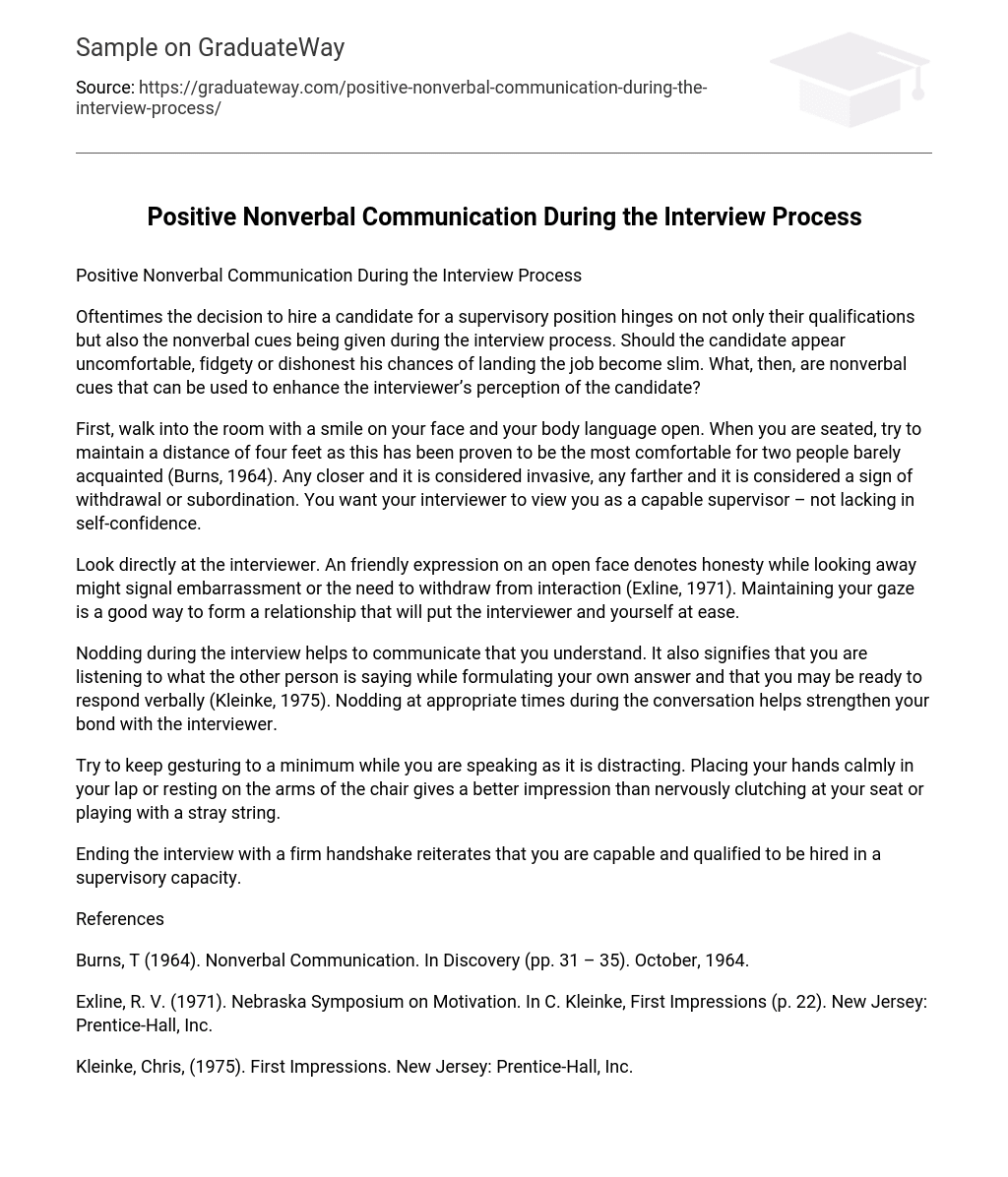Oftentimes the decision to hire a candidate for a supervisory position hinges on not only their qualifications but also the nonverbal cues being given during the interview process. Should the candidate appear uncomfortable, fidgety or dishonest his chances of landing the job become slim. What, then, are nonverbal cues that can be used to enhance the interviewer’s perception of the candidate?
First, walk into the room with a smile on your face and your body language open. When you are seated, try to maintain a distance of four feet as this has been proven to be the most comfortable for two people barely acquainted (Burns, 1964). Any closer and it is considered invasive, any farther and it is considered a sign of withdrawal or subordination. You want your interviewer to view you as a capable supervisor – not lacking in self-confidence.
Look directly at the interviewer. An friendly expression on an open face denotes honesty while looking away might signal embarrassment or the need to withdraw from interaction (Exline, 1971). Maintaining your gaze is a good way to form a relationship that will put the interviewer and yourself at ease.
Nodding during the interview helps to communicate that you understand. It also signifies that you are listening to what the other person is saying while formulating your own answer and that you may be ready to respond verbally (Kleinke, 1975). Nodding at appropriate times during the conversation helps strengthen your bond with the interviewer.
Try to keep gesturing to a minimum while you are speaking as it is distracting. Placing your hands calmly in your lap or resting on the arms of the chair gives a better impression than nervously clutching at your seat or playing with a stray string.
Ending the interview with a firm handshake reiterates that you are capable and qualified to be hired in a supervisory capacity.
References
Burns, T (1964). Nonverbal Communication. In Discovery (pp. 31 – 35). October, 1964.
Exline, R. V. (1971). Nebraska Symposium on Motivation. In C. Kleinke, First Impressions (p. 22). New Jersey: Prentice-Hall, Inc.
Kleinke, Chris, (1975). First Impressions. New Jersey: Prentice-Hall, Inc.





